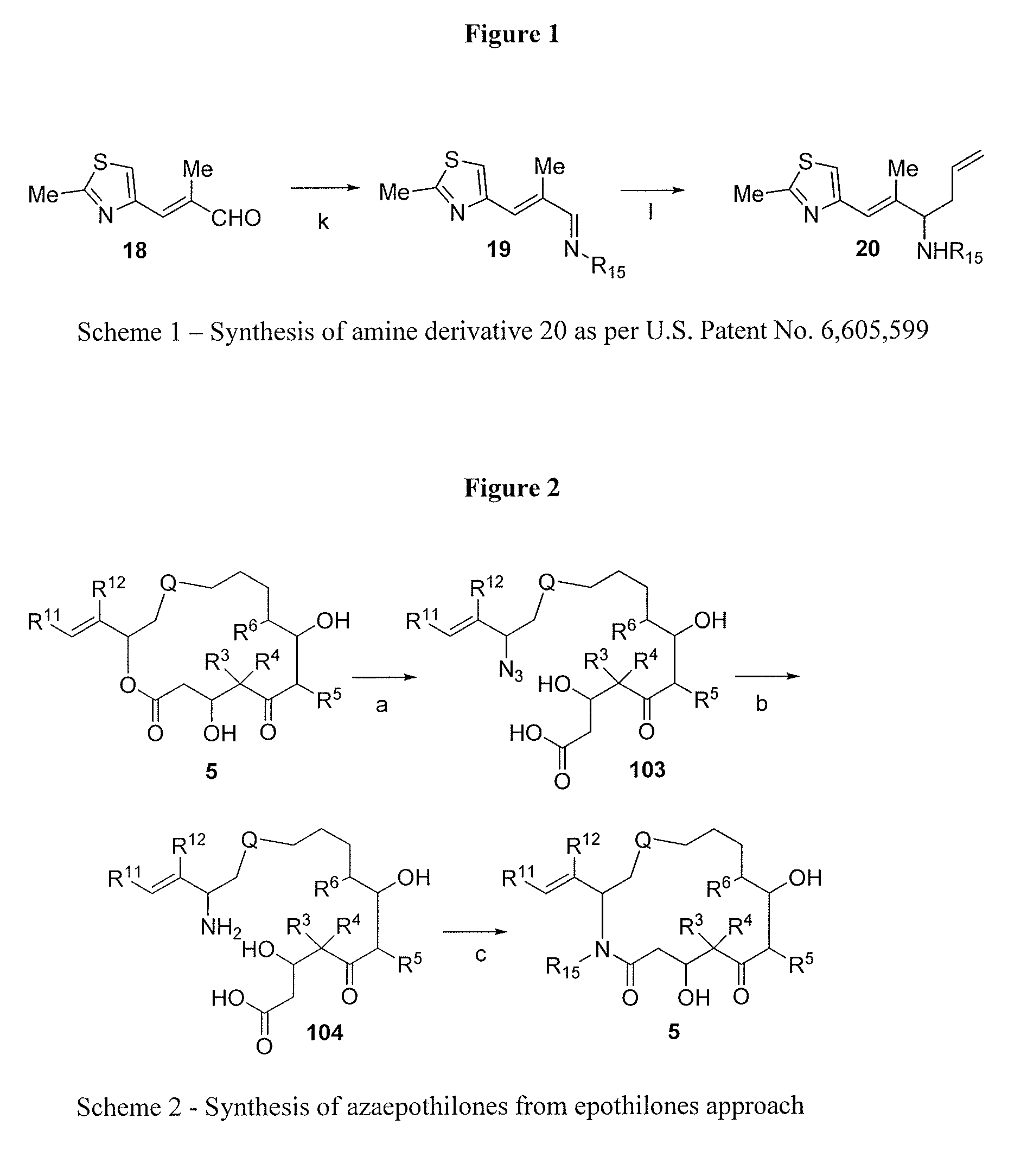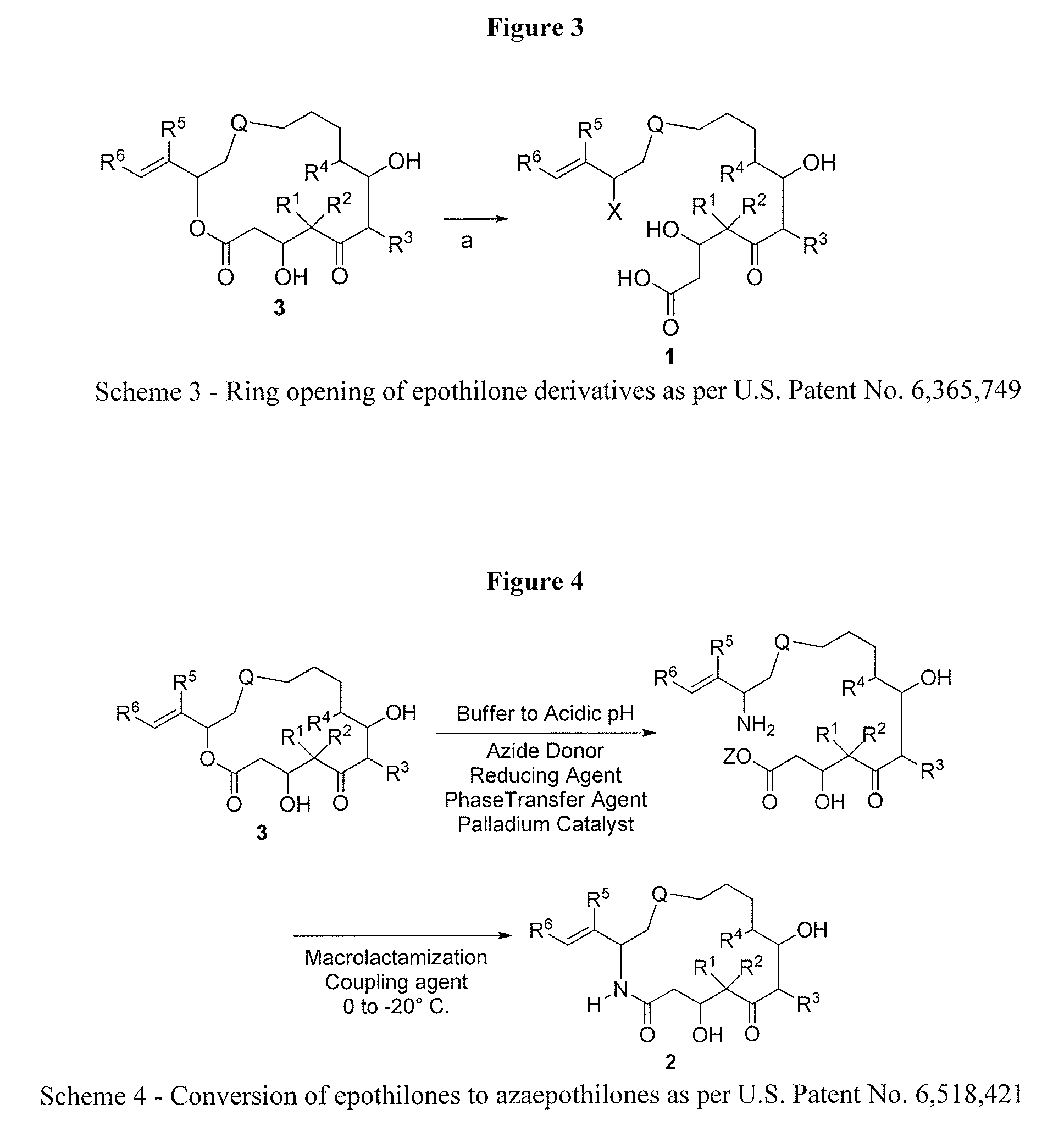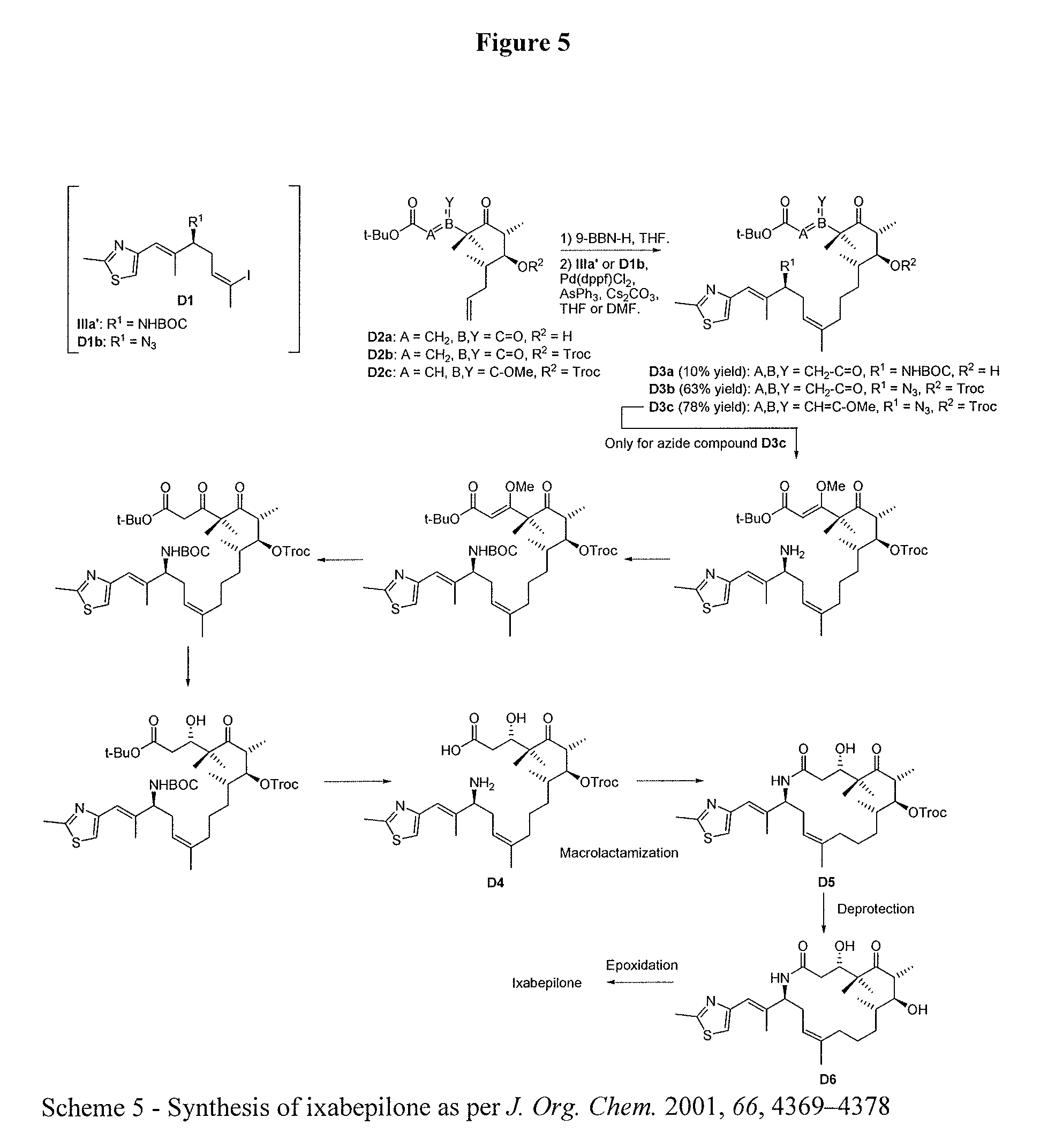Process for ixabepilone, and intermediates thereof
a technology of ixabepilone and ixabepilone, which is applied in the field of ixabepilone, can solve the problems of significant (and costly) burden on the manufacturer to control the level of arseni
- Summary
- Abstract
- Description
- Claims
- Application Information
AI Technical Summary
Benefits of technology
Problems solved by technology
Method used
Image
Examples
example 1
Preparation of XIXa and XIXa′ (see Schemes in FIG. 19)
Preparation of Compound XVIII′
[0292]To a solution of compound XVI′ (100 g, 389 mmol) in dry DCM (800 mL) was added Et3N (73 mL, 506 mmol) and TBSOTf (113 g, 428 mmol) dropwise at room temperature under an atmosphere of N2. The resulting reaction mixture was stirred at room temperature overnight (solution A). In a separate flask, to a solution of XVII (80 g, 622 mmol) in dry DCM (500 mL) was added TiCl4 (1 N in DCM, 650 mL, 650 mmol) at −78° C. under an atmosphere of N2. After stirred at −78° C. for 10 minutes, solution A was added dropwise into the XVII solution over 1 hour, then the resulting mixture was warmed to room temperature and stirred overnight. After completion by TLC, the reaction mixture was quenched with sat. aq. NH4Cl. The aqueous layer was extracted with DCM (400 mL×2). The combined organic layers were dried over Na2SO4, filtered and evaporated. The residue was diluted with hexane (500 mL) and stirred overnight for...
example 2
Preparation of XIVax (see Schemes in FIG. 20)
Preparation of Xia
[0298]To a solution of Xa (35 g, 200 mmol, Rf=0.5, EtOAc / petroleum ether=1:3, UV) in dry THF (414 mL) was added (R)-tert-butyl-sulfinamide (29 g, 400 mmol) and Ti(i-PrO)4 (118 mL, 400 mmol) at room temperature under an atmosphere of N2, then the reaction mixture was stirred overnight. The mixture was cooled to 5° C. with ice bath and brine (150 mL) was added cautiously. The resulting suspension was diluted with EtOAc (100 mL) and filtered through a pad of diatomaceous earth and the filter cake was washed with EtOAc (150 mL×2). The filtrate was washed with brine (260 mL×3), dried over Na2SO4, filtered and concentrated under reduced pressure. The residue was purified by column chromatography on silica gel (EtOAc / petroleum ether=1:5) to give XIa (42 g, yield: 77%, Rf=0.4, EtOAc / petroleum ether=1:3, UV) as a yellow solid. 1H NMR (400 MHz, CDCl3) δ 8.25 (s, 1H), 7.31 (s, 1H), 7.04 (s, 1H), 2.74 (s, 3H), 2.37 (s, 3H), 1.22 (s,...
example 3
Preparation of IIIa′ (see Schemes in FIG. 21)
The Preparation of Compound XVa
[0310]To a solution of XIVax (10 g, 32.5 mmol, Rf=0.9, EtOAc / petroleum ether=1:3, UV) in THF / t-BuOH / H2O (1:1:0.1, 210 mL) was added NMO (9.13 g, 50% aq. solution, 39 mmol) and OsO4 (8.3 mL, 0.65 mmol, 1 g in 50 mL t-BuOH) at 0° C., followed by stirring at 23° C. for 18 h. After TLC analysis (Petroleum / EtOAc=1:1) showed that the reaction was complete, the reaction mixture was quenched by adding sat. aq. NaHSO3 (80 mL) and H2O (200 mL) at 0° C., stirred for 30 min and extracted with MTBE (100 mL×4). The collected organic layers were washed with brine (100 mL×2), dried over Na2SO4 and concentrated under vacuum to give the crude product XXIa (22 g, Rf=0.2, EtOAc / petroleum ether=1:3, UV) as a yellow oil.
[0311]To a solution of XXIa (22 g, crude from 32.5 mmol of XIVax, Rf=0.2, EtOAc / petroleum ether=1:3, UV) in THF / H2O (1:1, 200 mL) was added NaIO4 (16.7 g, 78.0 mmol) at 0° C. and stirred for 40 min. After TLC anal...
PUM
| Property | Measurement | Unit |
|---|---|---|
| temperature | aaaaa | aaaaa |
| temperature | aaaaa | aaaaa |
| temperature | aaaaa | aaaaa |
Abstract
Description
Claims
Application Information
 Login to View More
Login to View More - R&D
- Intellectual Property
- Life Sciences
- Materials
- Tech Scout
- Unparalleled Data Quality
- Higher Quality Content
- 60% Fewer Hallucinations
Browse by: Latest US Patents, China's latest patents, Technical Efficacy Thesaurus, Application Domain, Technology Topic, Popular Technical Reports.
© 2025 PatSnap. All rights reserved.Legal|Privacy policy|Modern Slavery Act Transparency Statement|Sitemap|About US| Contact US: help@patsnap.com



